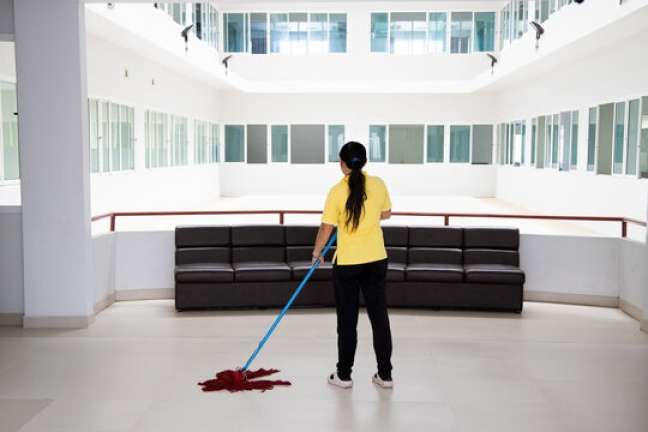Earning certifications is part and parcel of working a healthcare job. These courses can act as gatekeepers to certain professional roles, enhance your skills, and potentially boost your paycheck.
Healthcare professionals who need an ACLS course have probably seen plenty of advertisements for online certification courses. But how can you tell if an ACLS certification course is legitimate?
Let’s look at how you can evaluate these classes to make sure you’re getting the information you need, and so you don’t pay for a class that isn’t worth the paper the certificate is printed on.
Evaluate the Curriculum
There are many different online certification programs students can choose from. But since employers and state agencies often require completion of a specific course, you need to evaluate the criteria of each training course on offer.
For instance, cardiopulmonary resuscitation (CPR) is often a requirement for healthcare professionals. CPR is a potentially life-saving technique for trying to help victims of cardiac arrest when their heart ceases to pump blood effectively. It features a combination of rhythmic chest compressions, often in conjunction with ventilation and the application of a defibrillator. The goal is to achieve a return of spontaneous circulation for the patient.
CPR classes typically consist of a lecture and paper exam, hands-on practice performing CPR with other students, and finally a test of your skills and understanding of this life-saving technique. Prospective students include the general public and medical professionals, as well as employees of some industries where certification is required or encouraged.
Since so many students need this entry-level healthcare skill, there are unscrupulous vendors who will try and sell shortcut classes. You’ll receive a certificate, but it’s unlikely that it will truly qualify you for employment. Similar things can even happen with higher-level courses for Basic Life Support (BLS), Advanced Life Support (ALS), and Advanced Cardiac Life Support (ACLS).
You need to expect a certain level of rigorousness in your online certification courses. Be skeptical of wild claims, rock-bottom pricing, and classes without any in-person, hands-on training.
Investigate the Course Provider
Providers of ACLS courses should already be prestigious names in education, science, and healthcare. Many of the best providers carry teaching credentials or accreditations from federal, state, or local authorities.
Consider that most legitimate CPR instructors teach their courses under the auspices of institutions like the American Heart Association (AHA) and the American Red Cross (two of the most recognized names in healthcare in the country). There are many online options, but your employer might only accept certification from a few.
Look for online ACLS, BLS, and ALS courses with a recognizable hospital or educational association acting as a course sponsor. CPR courses should also have a course sponsor, though it may not be hospital-related.
By doing this basic research, you’ll know that your training center is reputable and has the right course material. Don’t be shy about asking if the credential or certificate you’re seeking qualifies for your prospective employer. There’s no such thing as too much information when comparing a number of websites for ACLS courses.
Consider asking the following questions:
- Will your tuition include hard copy materials and books, or will it be entirely online?
- Is there an in-person, hands-on skills test or classroom session students must attend?
- Is the certification exam online, or does it take place at a testing center with a proctor?
- Are the CPR materials AHA compliant, AHA approved, or Red Cross approved?
- Does the course offer a money-back guarantee?
Is the Certification NBECC Compliant?
Understanding what company, board, or organization issues the certification for your course will help determine legitimacy. The courses need to comply with the National Board of Emergency Care Certification standards. If the issuer doesn’t comply, it’s a safe bet that they aren’t issuing legitimate certificates.
Training for Specific Needs
An entry-level healthcare job may only require a relatively simple pre-employment certificate or credential. The more skills a job requires, the more training and certifications you will need to have. This usually means you’ll earn a bigger paycheck. Just make sure your training meets the needs of the job you are seeking.
The activities you practice with your course provider will prepare you for working in places ranging from ambulances to intensive care units. Let’s look at a few specific credentials and online certifications.
CPR
CPR certification is often a requirement to work as a lifeguard, babysitter, or any position inside a healthcare facility. Businesses like restaurants, gyms, and schools might also require CPR training.
Within this subcategory of online certifications, there is considerable variance in the skills taught in the course – and that’s by design.
CPR for professional rescuers differs significantly from the skills taught to laypersons. The former students will practice performing lifesaving procedures in a team, using advanced medical interventions, and transporting patients. The latter group may not require in-depth instruction and are much more likely to end up working alone.
Accordingly, there are CPR courses tailor-made for different groups of people. For instance, if someone wants to learn to help a family member or a colleague in the event of cardiac arrest, they might take an entry-level CPR course that focuses only on compressions, not airways or rescue breathing. The use of an automated external defibrillator may also be part of the training.
Other points of emphasis for entry-level CPR courses will include activating the 911 system to get emergency resources rolling. Students will also learn about recognizing the signs of significant life threats and choking interventions for babies and adults.
Some courses may focus on CPR for infants, adolescents, or adults, depending on the type of people your job will have you working with. In general, the more advanced the CPR course, the more skills you will learn. For example, a BLS CPR class will cover treating patients of all ages using various techniques and tools. At the end of it, you will receive a BLS card for CPR.
An Advanced Cardiac Life Support (ACLS) certification course would go way beyond CPR alone, and the focus would include administering medications, performing intubation, and interpreting the patient’s heart rhythm.
BLS
BLS is a credential program in the skills you need to perform basic life support. It is often a requirement to work in an emergency room or as an EMT.
You will learn to treat sick and injured people by addressing threats to their airways, breathing, or circulation. The interventions within your scope of practice will include things like providing oxygen therapy, clearing an airway, bandaging, splinting, performing EKGs, and providing some medications. This certification often requires a separate certificate for CPR.
ALS
Advanced Life Support (ALS) is a step up from BLS. Paramedics usually need to earn and maintain an ALS certification to work either in the prehospital or hospital field. In addition to everything in the EMT’s scope of practice, an ALS provider will have additional skills.
Paramedics must be able to give a wide variety of medications and narcotics, perform invasive procedures like thoracic decompression, and even use a drill to gain intravenous or intraosseous access to a patient’s bloodstream.
PALS
Pediatric Advanced Life Support (PALS) is a specialized ALS course. It will focus on advanced techniques for caring for children with heart issues. It is often a requirement to practice for a paramedic or medical professional working with pediatric cardiac patients. There is typically an emphasis on real-life practice through clinical rotations in intensive care units.
ACLS
Advanced Cardiac Life Support (ACLS) is often a requirement to work in the advanced life support field or within specific hospital settings. ACLS algorithms prepare students to understand and treat certain heart conditions. The course’s classroom setting will help to teach specialized skills.
There will also likely be an emphasis on understanding the physiology of heart conditions and learning their early warning signs.
Renewal vs. Original Courses: Different Requirements
Be sure to pay attention to the labeling when looking at course options for online certifications. “Original courses” refer to those designed for students who are certifying for the first time. Renewal courses are for individuals who need to recertify their proficiency.
Many healthcare workers have requirements or options to meet specific continuing education criteria, maintaining their credentialing beyond its original expiration. If they don’t perform the required elements of the continuing education program, they’ll have to take a renewal course to recertify.
ACLS Certification: A Summary
Online certification can be part of the road to widening your horizons and climbing the employment ladder. Now you know that to get the certification you need, you must first understand the exact requirements of your job or the new employment you’re looking for.
Once you have those requirements, you can look for an ACLS certification or another course to help you achieve your goals. Check out all the online courses and certifications at the American Medical Resource Institute today!
Read Also: Which AAT Course Should I Do?
















